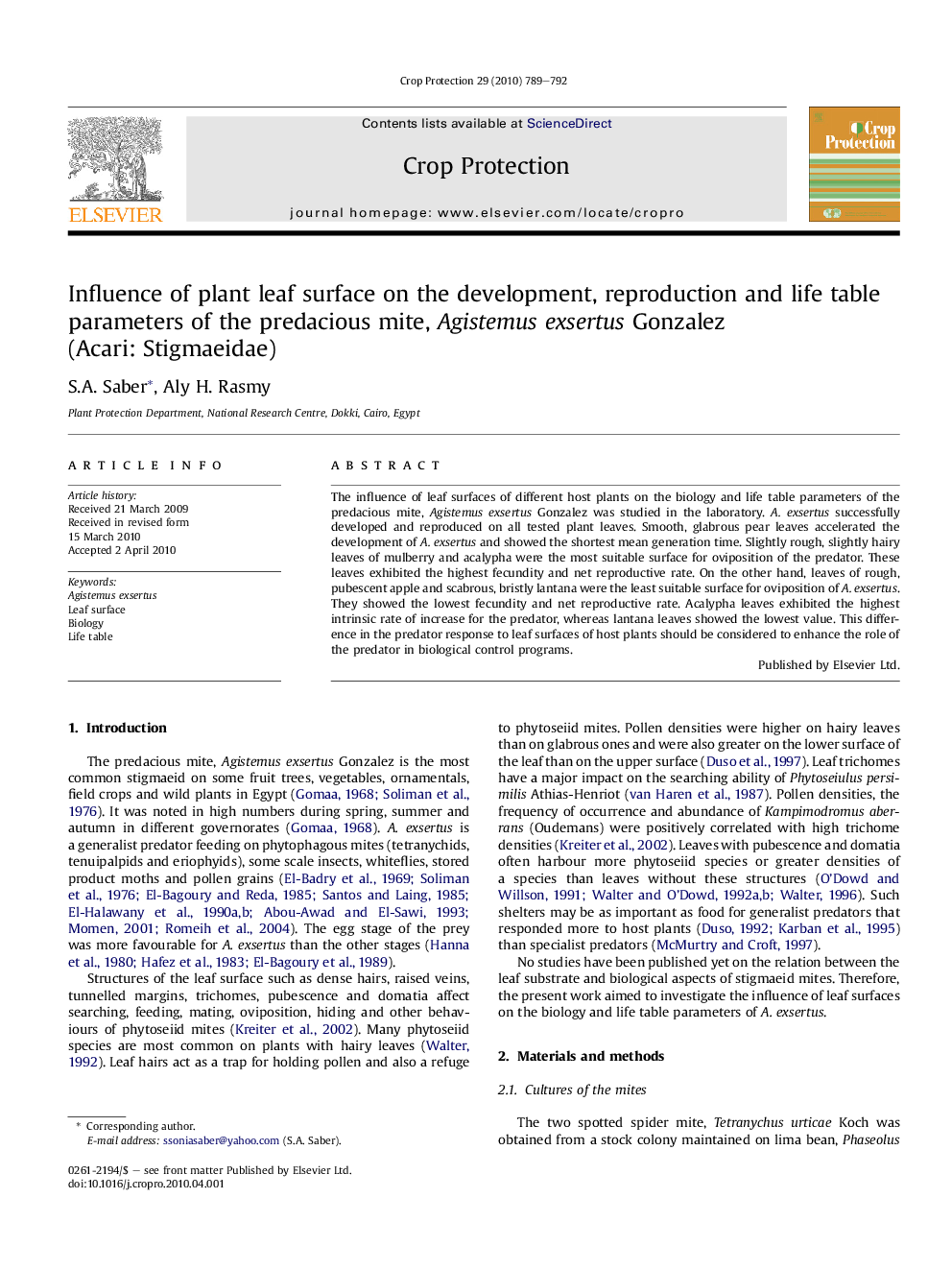| Article ID | Journal | Published Year | Pages | File Type |
|---|---|---|---|---|
| 4506730 | Crop Protection | 2010 | 4 Pages |
Abstract
The influence of leaf surfaces of different host plants on the biology and life table parameters of the predacious mite, Agistemus exsertus Gonzalez was studied in the laboratory. A. exsertus successfully developed and reproduced on all tested plant leaves. Smooth, glabrous pear leaves accelerated the development of A. exsertus and showed the shortest mean generation time. Slightly rough, slightly hairy leaves of mulberry and acalypha were the most suitable surface for oviposition of the predator. These leaves exhibited the highest fecundity and net reproductive rate. On the other hand, leaves of rough, pubescent apple and scabrous, bristly lantana were the least suitable surface for oviposition of A. exsertus. They showed the lowest fecundity and net reproductive rate. Acalypha leaves exhibited the highest intrinsic rate of increase for the predator, whereas lantana leaves showed the lowest value. This difference in the predator response to leaf surfaces of host plants should be considered to enhance the role of the predator in biological control programs.
Keywords
Related Topics
Life Sciences
Agricultural and Biological Sciences
Agronomy and Crop Science
Authors
S.A. Saber, Aly H. Rasmy,
